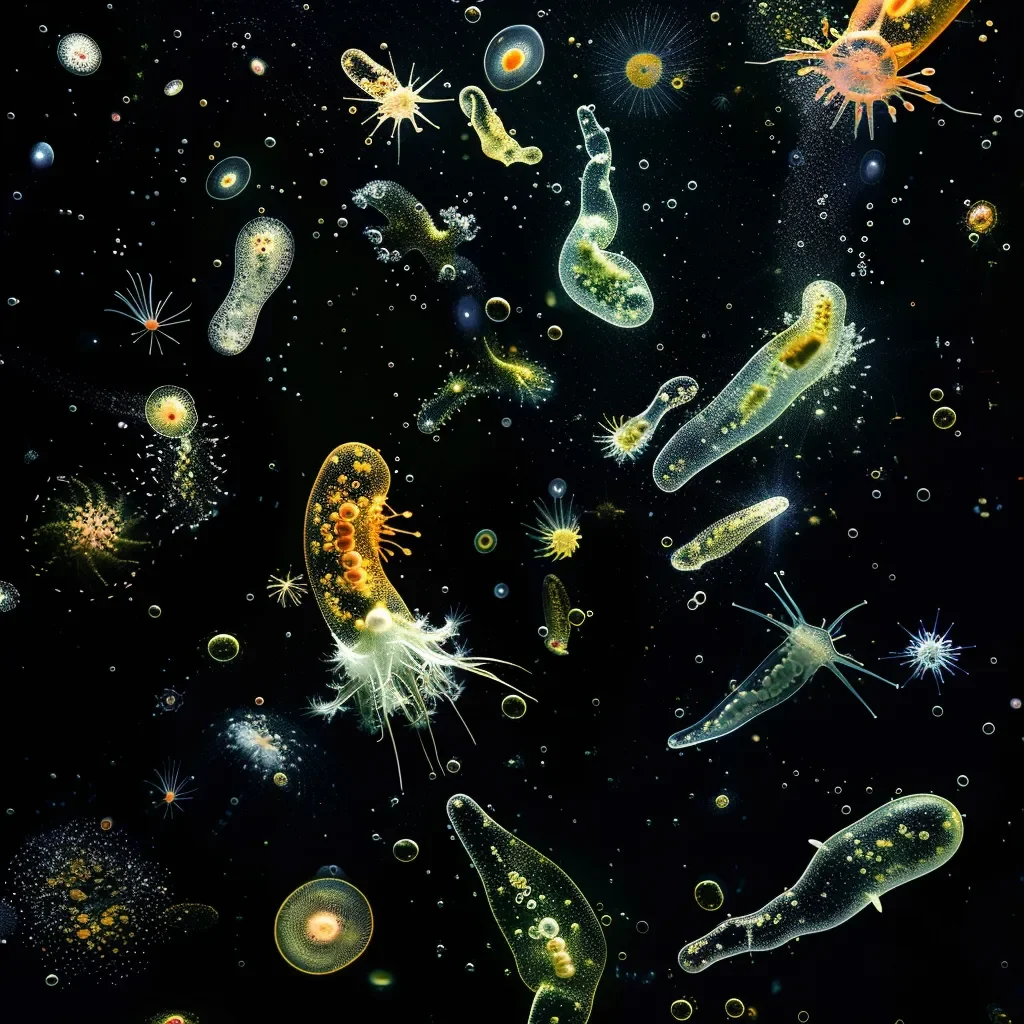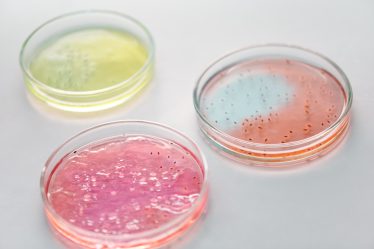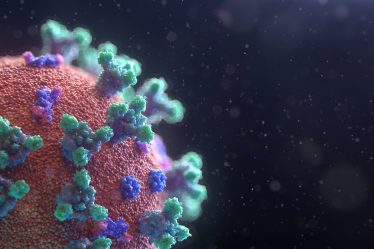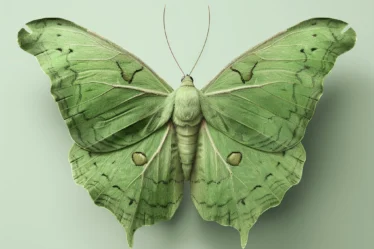
Are you curious about the tiny creatures that power our oceans and lakes? Plankton might be small, but play a huge role in aquatic ecosystems.
In this blog, we’ll break down the types of plankton, including phytoplankton and zooplankton, explore their different sizes, and discover their various habitats. You’ll learn how they support food webs, produce oxygen, and recycle nutrients. Dive in to see why these microscopic marvels are vital to our planet’s health.
If you’re looking to improve your study habits, our blog on how to learn efficiently has some great tips. For those focusing on reading, we’ve got techniques for learning to read that are super helpful. We also discuss the pros and cons of online learning and provide an honest look at homeschooling benefits and challenges. If you’re updating your resume, our CV writing guide is a must-read. You can find all these and more in our learning tips section.
Plankton, Phytoplankton, and Zooplankton: Key Takeaways
In a hurry? Don’t worry. Our critical takeaways on plankton, phytoplankton, and zooplankton will give you a quick and easy summary of the main points:
🟠 Plankton, including phytoplankton and zooplankton, support marine food webs and contribute to nutrient cycling and carbon sequestration.
🟠 Climate change, ocean acidification, pollution, and microplastics negatively impact plankton growth, health, and survival.
🟠 Protecting plankton is vital for sustaining marine ecosystems.
Types of Plankton
Plankton is essential to aquatic ecosystems. It comprises diverse organisms that drift with water currents. Plankton are categorized based on their roles and sizes, which helps us understand their functions in the marine environment.
Phytoplankton: Photosynthetic Plankton
Phytoplankton are microscopic plant-like organisms that perform photosynthesis. They form the base of the aquatic food web and supply energy to various marine species.
Phytoplankton uses sunlight to convert carbon dioxide and water into glucose and oxygen through photosynthesis. This process generates food for the phytoplankton and produces oxygen, essential for life on Earth. Phytoplankton are responsible for producing about 50% of the oxygen in the atmosphere, making them vital for maintaining the planet’s oxygen levels.
Examples of Phytoplankton
- Diatoms: Single-celled algae encased in silica shells, known as frustules. Diatoms are highly efficient at photosynthesis and are a major component of marine phytoplankton. Their intricate silica shells also contribute to marine sediments after they die.
- Cyanobacteria: Also referred to as blue-green algae, cyanobacteria are among the oldest organisms on Earth. They can fix atmospheric nitrogen, which is crucial in nutrient-poor environments. Cyanobacteria can thrive in both freshwater and marine systems.
- Dinoflagellates: These protists have two flagella to move through the water. Some dinoflagellates can produce toxins, leading to harmful algal blooms (HABs), harming marine life and human health.
Zooplankton: Animal Plankton
Zooplankton are microscopic animal organisms that float in the water column. They primarily feed on phytoplankton and other smaller zooplankton and play an important part in aquatic food webs.
Zooplankton links the primary producers (phytoplankton) and larger marine animals. They consume phytoplankton, bacteria, and smaller zooplankton and are preyed upon by fish, whales, and other aquatic animals. This transfer of energy and nutrients up the food chain is vital for the survival of higher trophic levels.
Examples of Zooplankton
- Copepods: These tiny crustaceans are among the most abundant types of zooplankton. They are a vital food source for many fish species. Copepods play a significant role in the ocean’s carbon cycle by consuming phytoplankton and transferring carbon to deeper waters through their fecal pellets.
- Krill: Krill are small, shrimp-like crustaceans, especially important in the Antarctic ecosystem. They feed on phytoplankton and are the primary diet of many marine animals, including baleen whales, seals, and penguins.
- Jellyfish Larvae: Also known as planulae, jellyfish larvae are an early life stage of jellyfish. They drift with ocean currents and eventually become polyps, later developing into adult jellyfish.
Bacterioplankton and Virioplankton
Bacterioplankton and virioplankton are microscopic but play significant roles in marine ecosystems by influencing microbial dynamics and nutrient cycles.
Bacterioplankton:
These bacteria decompose organic matter, releasing nutrients into the water. This process is essential for recycling nutrients, which support the growth of phytoplankton and other marine life. Bacterioplankton are also involved in nitrogen fixation, making nitrogen available to other organisms in the ecosystem.
Virioplankton:
These viruses infect marine microorganisms, including bacteria and phytoplankton. By lysing (breaking down) their host cells, virioplankton release organic matter and nutrients into the environment, which other microorganisms can utilize. This viral lysis also helps control the population sizes of various microbial communities, maintaining balance within the ecosystem.
Understanding the different types of plankton and their roles in the aquatic environment is crucial for appreciating their importance in global ecosystems. Every kind of plankton contributes uniquely to the health and functioning of marine and freshwater habitats, influencing everything from nutrient cycling to the worldwide carbon cycle.
Are you finding concepts like phytoplankton and zooplankton intricate? A biology tutor can offer personalized lessons that cater to your learning style, making complex biological processes accessible and engaging.
Plankton Size Classifications
Plankton are classified not only by their type but also by their size. This size-based classification helps understand their ecological roles and distribution in aquatic environments.
Microplankton (20-200 µm)
Microplankton includes most phytoplankton and protozoa. These tiny organisms are crucial for photosynthesis and nutrient cycling. Examples of microplankton are diatoms and ciliates. Due to their size, microplankton can be easily consumed by many zooplankton species, making them a vital part of the aquatic food web.
Mesoplankton (0.2-20 mm)
Mesoplankton consists of small zooplankton such as copepods and small larvae. Copepods are one of the most abundant types of mesoplankton and play a key role in transferring energy from phytoplankton to larger marine animals. We can find mesoplankton in both coastal and open ocean environments.
Macroplankton (2-20 cm)
Macroplankton includes larger zooplankton like krill and some jellyfish. Krill are especially important in polar regions, serving as a primary food source for many large marine animals, including whales and seals. Macroplankton can also include larger larval stages of aquatic organisms.
Megaplankton (>20 cm)
Megaplankton are the largest plankton, including large jellyfish and siphonophores. These organisms can reach substantial sizes and are often visible to the naked eye. Megaplankton play significant roles in marine ecosystems as predators and prey and can influence local biodiversity and trophic dynamics.
Understanding plankton size classifications helps in studying their ecological roles and interactions. Each size category plays a unique part in nutrient cycling, energy transfer, and maintaining the health of marine ecosystems.
Are you curious about chemistry in daily life? Explore our simple experiments you can do at home!
Plankton Habitats
Plankton inhabit various environments, including marine, freshwater, and atmosphere. Each habitat presents unique conditions that influence plankton diversity and distribution.
Marine Plankton
Marine plankton, including phytoplankton and zooplankton, live in the oceans and seas. They thrive in sunlit surface waters where light is abundant for photosynthesis. Marine plankton support marine food webs. Examples include diatoms, dinoflagellates, copepods, and krill. These organisms also contribute to global biogeochemical cycles, such as the carbon cycle.
Freshwater Plankton
We can find freshwater plankton in lakes, rivers, and ponds. They support aquatic food webs and contribute to nutrient cycling. Compared to marine habitats, freshwater environments often host different species of plankton. Common examples include green algae, cyanobacteria, rotifers, and freshwater copepods. Freshwater plankton helps maintain the health and balance of inland water ecosystems.
Aeroplankton
Aeroplankton are plankton that drift in the air. They include plant spores, pollen, bacteria, and tiny insects. Aeroplankton can travel long distances with the wind, spreading species across different regions. They aid in the dispersal of plants and microorganisms and can impact air quality and human health. Aeroplankton are collected and studied using traps and sweep nets from aircraft, balloons, and ground stations.
Knowing plankton’s diverse habitats highlights their ecological significance and roles in different environments. Each habitat supports unique plankton communities integral to ecosystem health and functioning.
If you find plankton challenging, don’t worry! Personalized tutoring or interactive biology lessons make these concepts more straightforward. Explore more biology topics and broaden your knowledge with our free Biology blogs.
Ecological Roles of Plankton
Plankton maintain the balance and health of aquatic ecosystems. They support food chains and biogeochemical cycles, sustaining life in water environments.
Plankton in the Food Chain
Phytoplankton are primary producers in aquatic ecosystems. They use sunlight for photosynthesis, converting carbon dioxide and water into glucose and oxygen. This process generates energy for phytoplankton and produces oxygen, essential for marine organisms. Phytoplankton form the foundation of the aquatic food web, supporting a diverse array of marine life.
Zooplankton feed on phytoplankton and other small plankton. Zooplankton links primary producers and higher trophic levels like fish, whales, and seabirds. By consuming phytoplankton, zooplankton transfers energy up the food chain, ensuring the survival of larger marine animals. This energy transfer maintains the balance and productivity of marine ecosystems.
Plankton in Biogeochemical Cycles
Phytoplankton absorbs carbon dioxide from the atmosphere during photosynthesis, reducing greenhouse gas levels. When plankton dies, their remains sink to the ocean floor, sequestering carbon and preventing it from re-entering the atmosphere. This process, known as the biological pump, helps regulate the Earth’s climate by storing carbon in deep ocean sediments.
Bacterioplankton recycle nutrients in aquatic environments. They decompose organic matter, breaking it into simpler compounds that other organisms can use. This nutrient recycling supports the growth of phytoplankton and other marine life. Bacterioplankton also fixes nitrogen, converting atmospheric nitrogen into forms usable by plants and other organisms. This process maintains the nutrient balance in aquatic ecosystems, ensuring their health and productivity.
Plankton sustain aquatic ecosystems and support a wide range of marine life through their roles in the food chain and biogeochemical cycles. Their contributions to primary production, carbon sequestration, and nutrient recycling are fundamental to the functioning and stability of these environments.
Explore biochemistry and the differences between organic and inorganic chemistry.
Threats to Plankton
Plankton face several threats that impact their survival and the health of aquatic ecosystems. These threats can significantly alter plankton populations and disrupt the balance of marine and freshwater environments.
- Temperature Changes: Warmer waters can alter phytoplankton communities and reduce zooplankton populations by affecting their food sources.
- Ocean Acidification: Increased acidity impairs phytoplankton’s ability to photosynthesize and build protective shells and affects the development and survival of zooplankton larvae.
- Microplastics: Tiny plastic particles ingested by plankton disrupt their health and feeding, causing physical harm and introducing toxic chemicals.
- Chemical Pollutants: Pesticides and heavy metals can cause physiological stress, impair reproduction, and lead to the death of plankton, affecting higher trophic levels in the food web.
How to Learn About Phytoplankton and Zooplankton?
Plankton, including phytoplankton and zooplankton, support marine food webs and contribute to nutrient cycling and carbon sequestration. Climate change, ocean acidification, pollution, and microplastics negatively impact plankton growth, health, and survival. Protecting plankton is vital for sustaining marine ecosystems, highlighting the need for further education through tutoring, lessons, and private classes.
If you’re searching for a biology tutor, a quick search for “biology tutor Liverpool” or “biology teacher Birmingham” on platforms like meet’n’learn can connect you with the ideal private teacher for your educational journey.
Those preferring group learning settings can find biology classes in their area by looking up “biology classes Leeds” or “biology lessons London” online, leading to community colleges or educational workshops.
Plankton, Phytoplankton, Zooplankton: Frequently Asked Questions
1. What are plankton?
Plankton are small organisms that drift in water and cannot swim against currents.
2. What are the main types of plankton?
The main types of plankton are phytoplankton (photosynthetic) and zooplankton (animal).
3. How do phytoplankton contribute to the ecosystem?
Phytoplankton perform photosynthesis, producing oxygen and forming the base of the aquatic food web.
4. Why are zooplankton important?
Zooplankton feed on phytoplankton, a key food source for larger marine animals.
5. What is the role of bacterioplankton?
Bacterioplankton recycle nutrients by decomposing organic matter in aquatic environments.
6. What are the size classifications of plankton?
We classify plankton by size into microplankton, mesoplankton, macroplankton, and megaplankton.
7. Where can marine plankton be found?
Marine plankton can be found in the oceans and seas, primarily in sunlit surface waters.
8. What are aeroplankton?
Aeroplankton are plankton that drift in the air, including spores, pollen, and microorganisms.
References:
1. Britannica
2. National Geographic
3. Wikipedia



